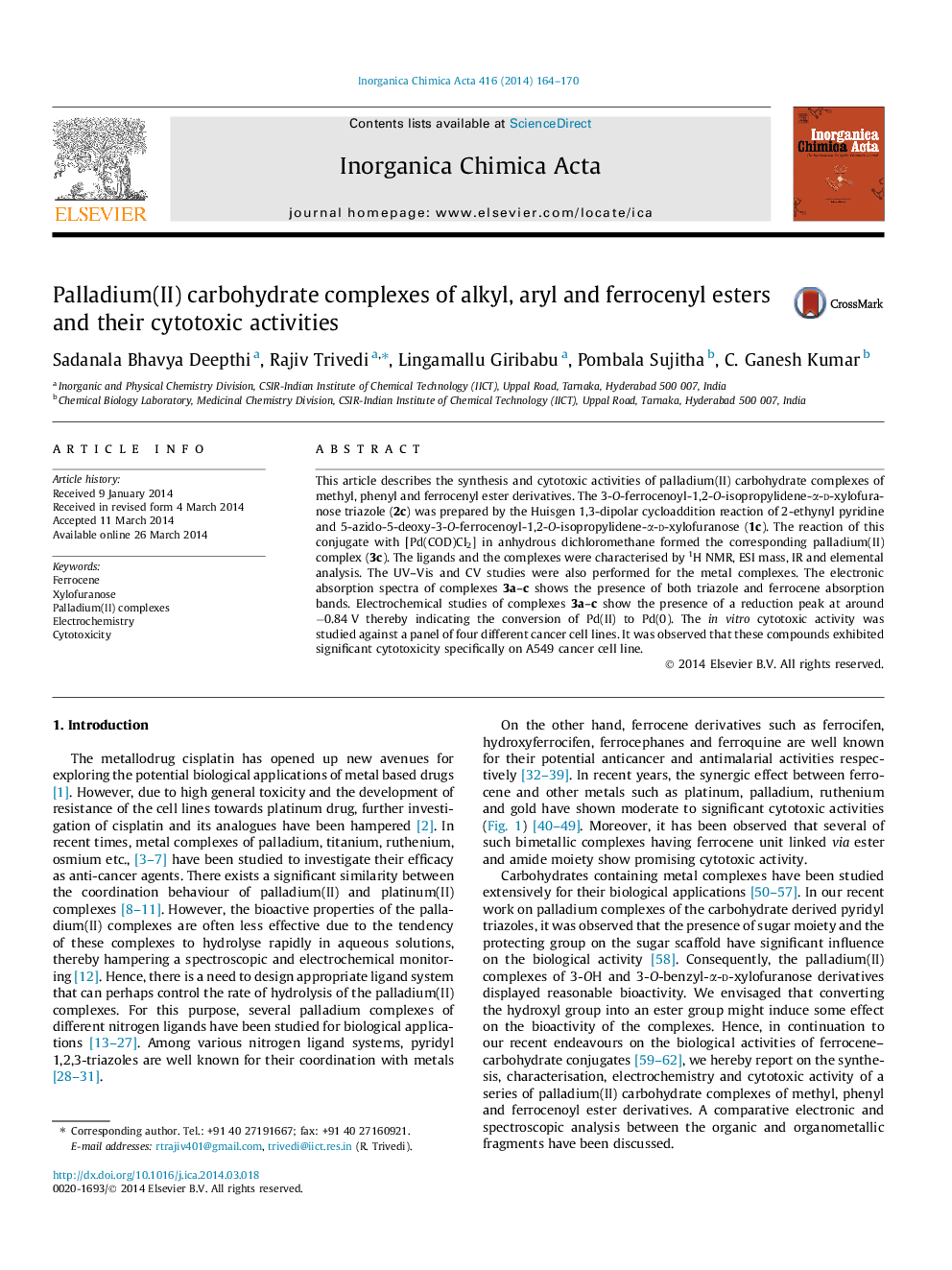| Article ID | Journal | Published Year | Pages | File Type |
|---|---|---|---|---|
| 1309965 | Inorganica Chimica Acta | 2014 | 7 Pages |
•First example of the palladium complex containing ferrocene–carbohydrate conjugate.•Characterisation by means of UV–Vis and CV experiments.•Ligands and metal complexes are selectively active on A549 cell line.
This article describes the synthesis and cytotoxic activities of palladium(II) carbohydrate complexes of methyl, phenyl and ferrocenyl ester derivatives. The 3-O-ferrocenoyl-1,2-O-isopropylidene-α-d-xylofuranose triazole (2c) was prepared by the Huisgen 1,3-dipolar cycloaddition reaction of 2-ethynyl pyridine and 5-azido-5-deoxy-3-O-ferrocenoyl-1,2-O-isopropylidene-α-d-xylofuranose (1c). The reaction of this conjugate with [Pd(COD)Cl2] in anhydrous dichloromethane formed the corresponding palladium(II) complex (3c). The ligands and the complexes were characterised by 1H NMR, ESI mass, IR and elemental analysis. The UV–Vis and CV studies were also performed for the metal complexes. The electronic absorption spectra of complexes 3a–c shows the presence of both triazole and ferrocene absorption bands. Electrochemical studies of complexes 3a–c show the presence of a reduction peak at around −0.84 V thereby indicating the conversion of Pd(II) to Pd(0). The in vitro cytotoxic activity was studied against a panel of four different cancer cell lines. It was observed that these compounds exhibited significant cytotoxicity specifically on A549 cancer cell line.
Graphical abstractWe report here the first example of palladium complex containing ferrocene–carbohydrate conjugate. A comparative study of the acetyl and benzoyl functional group with the ferrocenoyl analogue of these complexes is described using spectroscopic and electrochemical experiments. These complexes were also screened for in vitro cytotoxic activity.Figure optionsDownload full-size imageDownload as PowerPoint slide
